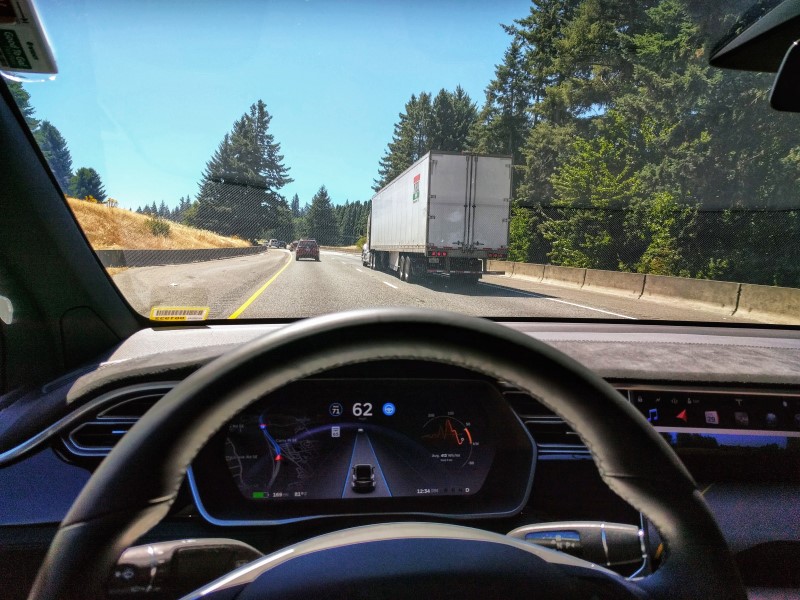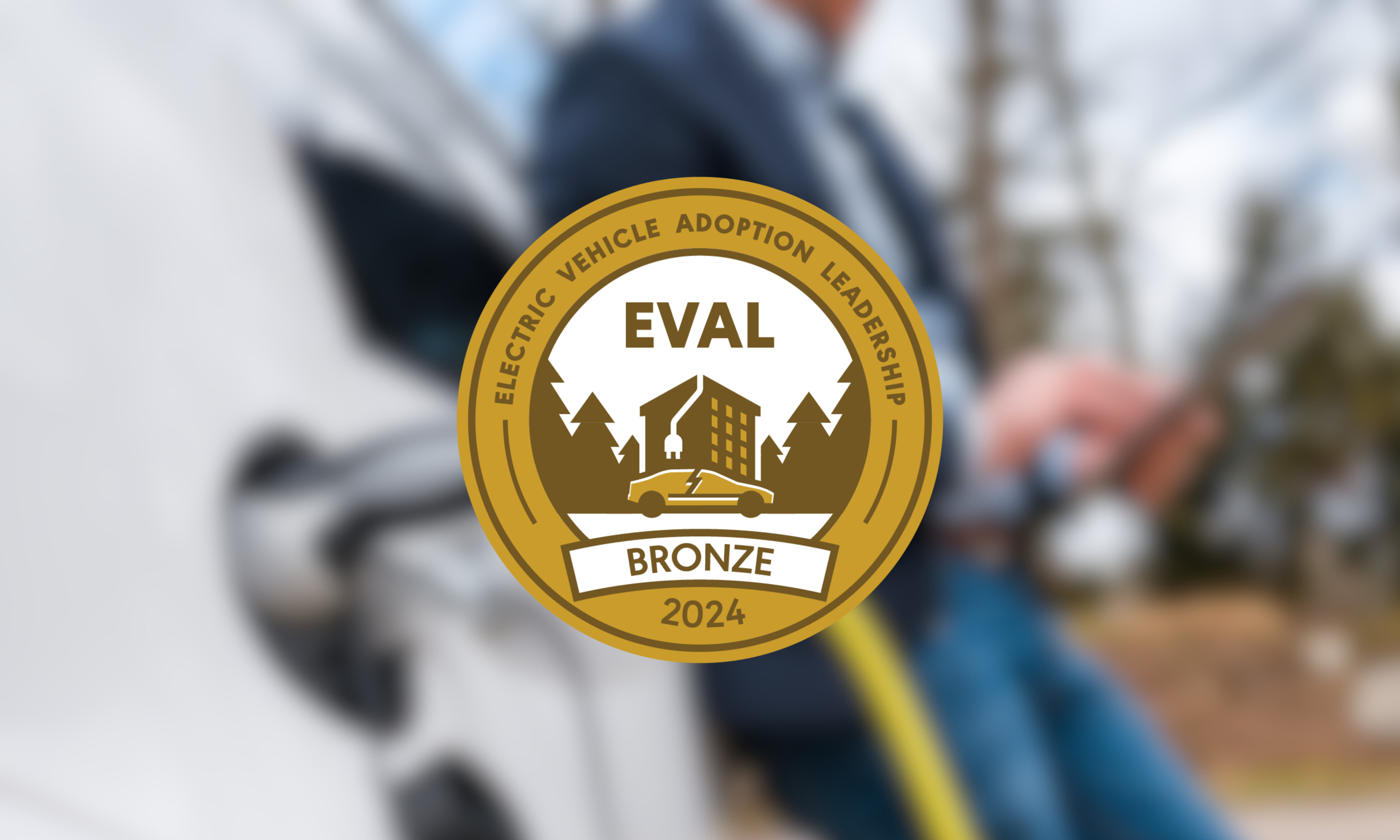A shift to autonomous vehicles (AVs) will be one part of the transition to sustainable transportation, in addition to the growing market share of electric vehicles (EVs) and the advance of shared mobility options, such as Zipcar and Envoy. These “three revolutions” working together have the greatest potential to reduce pollution, congestion, and collisions. AVs are a growing technology that consumers, policymakers and regulators should be aware of as a viable transportation option as the market develops. This primer is intended to provide more information on AVs and to highlight the Plug In America principle that all AVs should be electric.
What is an autonomous vehicle?
An AV has advanced technology that allows the vehicle to drive without human control. Through the use of sensors, cameras and digital mapping, the technology can create a safer and more efficient form of transportation. The National Highway Traffic Safety Administration (NHTSA) separates the technology into six different levels of autonomy, varying from level 0, where the human driver has full control of the vehicle’s functions, to level 5, where the vehicle can drive itself without a human.

Who has one in the market?
Currently, there are no vehicles on the market that are fully autonomous (SAE level 5). However, the technology is growing and many automakers are partnering with technology and carsharing companies to develop a new fleet of AVs. Car companies like Tesla and GM already have vehicles that exhibit level 2 self-driving capabilities and are testing higher level AV functions in public streets. A Tesla vehicle with Autopilot can handle acceleration and steering, but the driver must remain alert and engaged; the vehicle will exit Autopilot mode if it encounters a situation it cannot manage. Some companies have deployed vehicles with level 4 capability in limited geographic areas, such as autonomous shuttles at airports. Ford has announced plans to begin an autonomous vehicle service in 2022, and GM’s Cruise subsidiary is developing an autonomous vehicle in partnership with Honda.
How are AVs refueled?
Some AVs on the road today are powered by gasoline and some are battery EVs that are charged via human help connecting the vehicle plug to the electricity source. To be fully autonomous and have no human interference, though, wireless electric vehicle charging is the only available option for refueling AVs. The Society of Automotive Engineers International is developing the J2954 standard for wireless charging to allow easy charging of AVs at various levels of EV charging stations without complications or incompatibilities.
What does AV technology have to do with EV technology?
As noted above, to be fully autonomous with no human interference, AVs must be EVs. As both technologies develop further and experience widespread consumer adoption, the two technologies are likely to converge. The lower cost per mile of electric vehicles offers advantages to autonomous vehicles, particularly shared ones that may drive 100,000 miles per year or more. (This includes ride-sharing services such as Uber or Lyft, as well as car-sharing services such as Zipcar or Envoy.) Consumer adoption of EVs is accelerating due to battery costs declining, consumer education and awareness, and also supportive policies in many states. Therefore, since AVs are a few years behind EVs, when AVs are ready to be mass marketed the EV technology will be the best technology to choose and will already be widely accepted by consumers. In addition, the convergence of AVs, EVs and transportation service providers will together likely create a disruptive synergy that will transform the transportation sector.
Are AVs safe?
The American Auto Association (AAA), conducts regular surveys on perceptions of autonomous vehicles, generally finding high levels of concerns about their safety. The concerns are in part motivated by a lack of familiarity with the technology.
According to NHTSA, 94% of car crashes are due to human error. In its 2019 survey, the AAA Foundation for Traffic Safety found that 39% of drivers reported reading texts while driving and 29% reported typing texts in the 30 days prior to the survey. The survey also found that 24% of drivers reported driving while being so tired that they had trouble keeping their eyes open and 10% reported driving when impaired by alcohol. Autonomous vehicle technology has the potential to save over 30,000 people each year who die from injuries caused by car crashes.
How are these vehicles regulated in terms of safety and testing procedures?
Thirty-four states have passed legislation or issued executive orders regarding AVs, safety and testing procedures, and many states are considering similar steps. In September 2016, NHTSA developed a Federal Automated Vehicles Policy (FAVP) with guidance on the safe development of highly autonomous vehicles, including vehicle performance guidelines, model state policy, current regulatory tools and possible new regulatory actions. Subsequent NHTSA documents have emphasized the voluntary nature of this guidance.
Which cities are looking at AVs?
Many cities are already preparing for the emergence of AV technology, and some have even taken actions to be the testing grounds for these vehicles. Some of the leading cities with AVs include:
- Los Angeles: One of the main strategies within the “Urban Mobility in the Digital Age” report and plan for the city is to prepare for an automated future. The report includes policy plans and both short-term and long-term goals for the development and deployment of AVs within Los Angeles. Some of these goals include launching an AV pilot program and developing an AV network that incentivizes sharing of the vehicles.
- Orlando: The city has already passed many supportive laws on AVs and has partnered with local academic, private sector and government agencies to form the Central Florida Automated Vehicle Partnership.
- Pittsburgh: The city of Pittsburgh has attracted both Uber and Ford Motors to invest and partner with the city to accelerate the development of AVs. Pittsburgh was also named one of the Automated Vehicle Proving Grounds, furthering their position as a leader in embracing AV technology.
- Austin, Miami, and Washington, DC: Ford will begin its self-driving vehicle service in these cities. Ford had planned for service to begin in 2021, but with the disruptions of the COVID-19 pandemic, it is aiming for early 2022.
Are AVs growing in the global market?
Multiple city centers and car manufacturers across the world are joining the race toward AV deployment. In Tokyo, the Japanese government and business leaders planned to transform the transportation sector in time for the 2020 Summer Olympic Games by integrating AVs. With the Olympics now delayed until 2021, there is additional time for technological improvement.
How far away is this technology?
The rapid action of legislators, technology companies and car manufacturers to create the proper environment that will allow for the development and deployment of AVs demonstrates how quickly the technology is evolving. However, there is a considerable amount of technological improvement necessary. Initial optimistic timelines were pushed back as the scope of the computational challenge became clear. As a May 2020 Bloomberg article notes, “Weather has proved tricky, as have so-called edge cases, when someone else on the road—be it a driver, cyclist or electric scooter pilot—does something unexpected, as humans often do.”
Progress continues, with a wide range of timelines postulated. In its press release on its January 2020 survey, AAA suggest that self-driving vehicles are “still decades away from hitting the roads;” automakers have more aggressive timelines, estimating that they can ensure AVs are much safer than human drivers sometime in the next few years. Already, AVs operate in limited and defined regions, “islands of autonomy” as Bloomberg notes. Development of new such regions will contribute to driver familiarity and the vehicles’ machine learning.
Photo by Ian Maddox is licensed by CC BY-SA 4.0.

